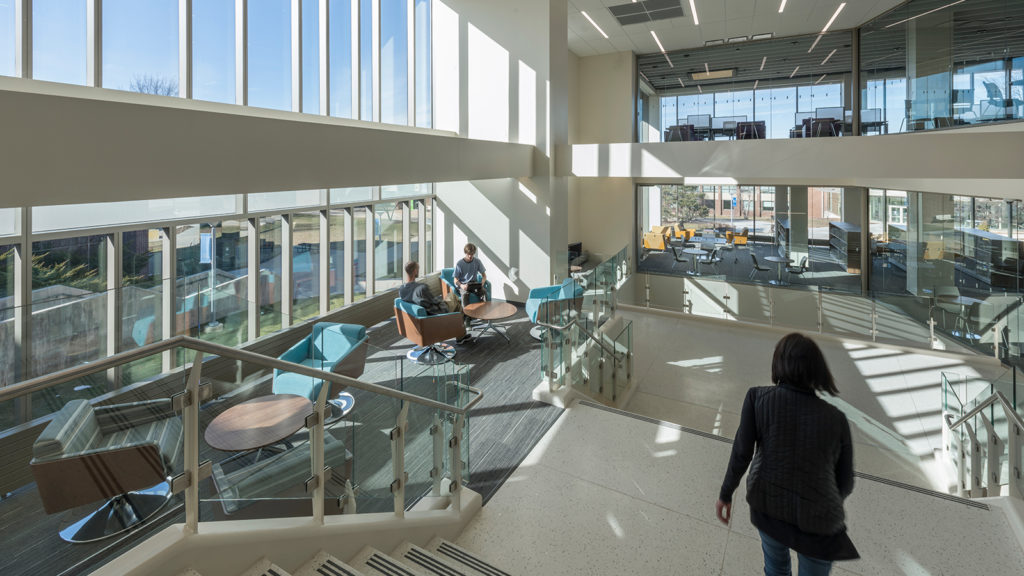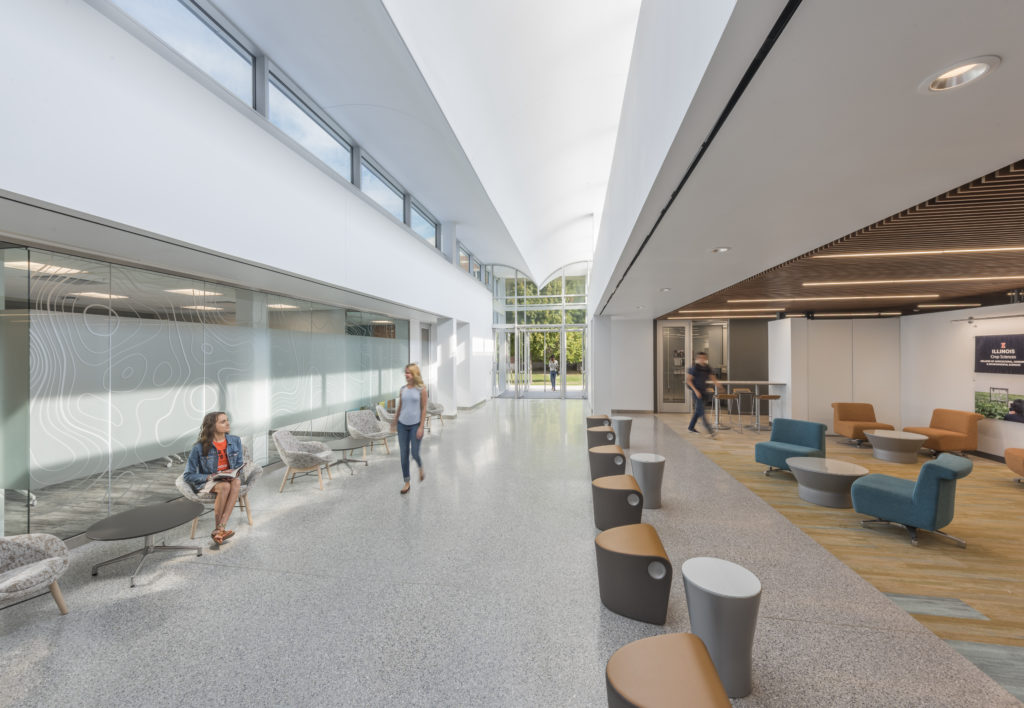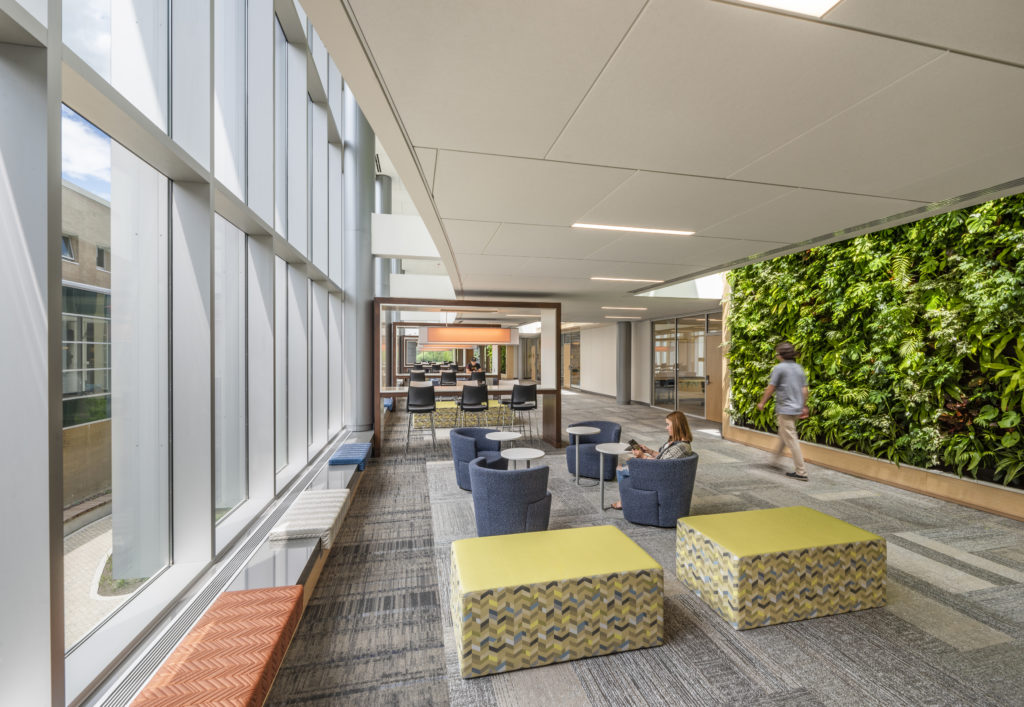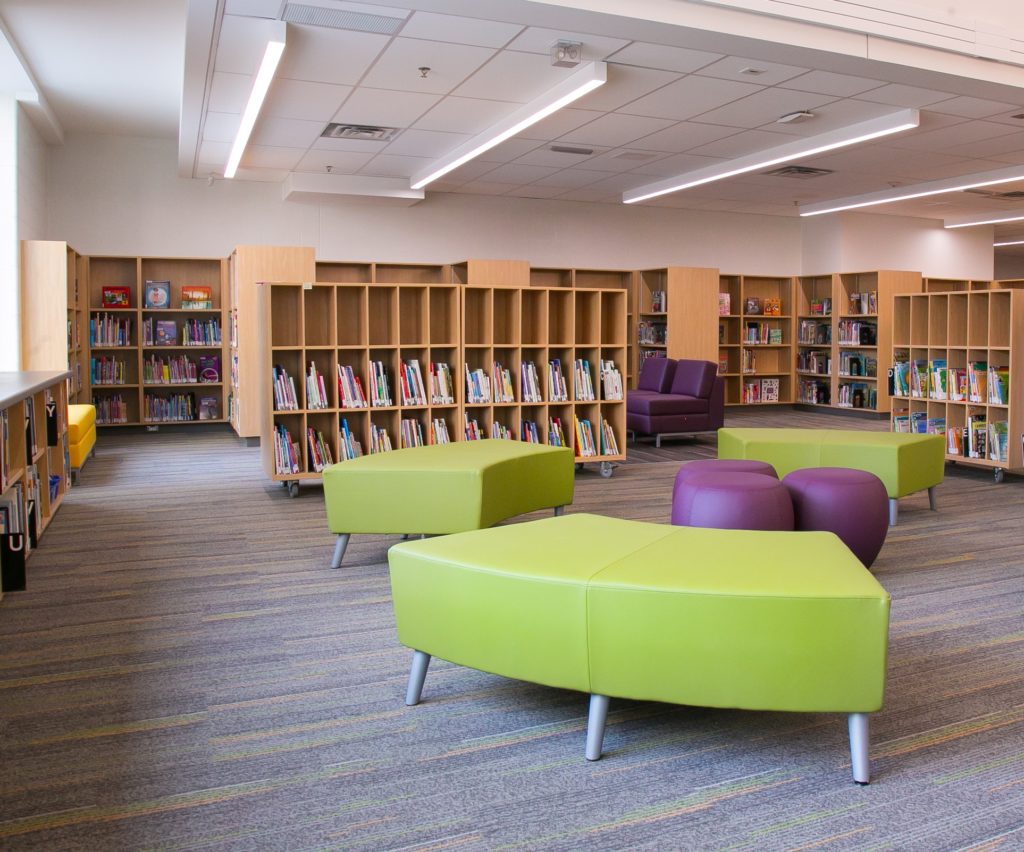In furniture dealer virtual calls and conference room debates across the nation, one question consistently comes to the fore: how can dealers (as well as suppliers and manufacturers) work better with interior designers?
The 2021 EDspaces Conference in Pittsburgh tackled this topic in a session titled, “Enhancing the Role of the Dealer in the Educational Furniture marketplace.” Furniture dealers interviewed three members of the educational architectural and design (A&D) community. The panelists drew from their experiences to reveal how dealers can better serve school designers.
If you missed the session, not to worry; the panel has reconvened here to take on questions posed by EDspaces. Respondents share how dealers can become more integrated into the process and build stronger relationships with designers.

How can we as dealers become true partners in the design and specifications process?
It’s not just about selling furniture and offering high-quality items — we need customer service and a trusted relationship. This all starts with the dealer having a strong knowledge of product lines. When we call with questions, we’re looking for answers that are succinct and accurate. Additionally, we value dealers’ breadth of knowledge and appreciate the truth when it comes to lead times, supply chain concerns, or expectations. Dealers know which products perform well in the field and which products don’t. We appreciate that feedback.
We also appreciate it when dealers show that they have done their homework with A&D firms. Does the designer operate a large or a small office? Who is the primary contact and who makes the final decisions? Who leads presentations? Who is responsible for client interface? We also encourage dealers to familiarize themselves with the types of projects we do. Through a quick chat or a peek at our websites, dealers can home in on whether the educational design is general or has areas of focus (e.g., early childhood, primary, middle, secondary, post-secondary).
There is also the balance of persistence vs. availability/access. Dealers should try to be there at the right time versus trying to be there all the time.
There is also the balance of persistence vs. availability/access. Dealers should try to be there at the right time versus trying to be there all the time. Some dealers encourage us to have lunch or attend parties. The reality is that we’re looking for a professional partner, and sometimes social gatherings are not the best way to create a professional relationship. Some dealers get frazzled when we don’t respond to emails or phone calls. That does not mean we don’t value them reaching out or their input — it just means that we may be busy at that time. It comes down to touchpoints, staying on our radar, being present in our physical or virtual libraries, and perhaps even conducting quarterly or bi-annual updates, which can be physical or virtual. These activities allow us and our teams to stay current with information and know that we can reach those dealers when the right time or project arises.
One of us works with a dealer who specializes in ceilings. The first time we worked with him, he was incredibly responsive and provided exactly the information we needed. He never calls us out of the blue, but he’s always ready when we call him. It’s a great relationship.
How can dealers start working with a new A&D without having any previous relationship?
Often, we have a vision for our project but not a solution. That’s why we appreciate well-informed sales representatives. Many of our relationships with dealers are based on how knowledgeable they are in their field and how quickly they can respond to us.
A catchy introduction might be necessary. This can be in the form of promo and feature product packets being dropped by the office with business cards. Alternatively, dealers can leave a sample of a new product at our offices, allowing us to test it while indirectly getting to know the dealer.
If we welcome a dealer for an introductory meeting, we want them to keep it to 15 to 20 minutes. If, however, we ask them to bring samples for a specific project, we will spend additional time and likely bring more team members to get the answers we need.

Moreover, we want to see data and research that support the product’s design integrity, application, and performance. That helps us sell the products to our clients. Sustainability is also critical. Let us know where the products are produced, as well as recycled content and recyclability. Another sustainability-related factor is how easily a product can be serviced and whether it has the option for replaceable parts.
Note also that A&D firms are highly graphic-oriented. Once dealers learn more about the types of projects we do, they can send us attractive graphics that illustrate the latest trends. They can also show us photos that exemplify how their latest products align with our work. Moreover, photos that show the product alone amid neutral finishes help us integrate it into presentations.
We value dealers that show us creative solutions that support our design intent. We further value custom solutions that can still be delivered within the project time frame and budget.
Again, designers are usually very busy as we juggle projects, phone calls, and meetings. If we reject a dealer’s offer for lunch or drinks, don’t return a call, or leave an email unanswered, they shouldn’t take it personally. We do see their information. If dealers have strong products and services with reasonable prices, we will call with our project needs.
What are the educational goals that A&D professionals need help responding to?
With influences like the pandemic and technology, education is constantly changing. Those changes impact the design of educational spaces, including layout, flexibility, and furniture. The resulting questions — how static or mobile space should be, for example — fuel recurring debates. Knowledgeable dealers help us navigate this state of flux and often open our eyes to solutions that can adapt to these emerging requirements.
At early stages of design development, we might not know exactly what we’re looking for. When dealers share successful applications from other institutions that faced challenges similar to those of our clients, they expand our understanding of product capabilities. And if dealers can prove a solution worked somewhere else via data or user testimony, it further reinforces the selection process. Budget and schedule are always key support elements.
What do you need and/or expect from a dealer versus a manufacturer?
From the manufacturer, we expect quality, sensible pricing, and solid answers to our questions, as well as timely delivery. We appreciate research-based products that support the latest pedagogies.
Since dealers function as an intermediary between the A&D firm/educational institutions and the manufacturers, we expect them to be clear, truthful, open, and timely … especially when delays or deficiencies arise. Our reputation is on the line with each item we might put forth. It helps to have different manufacturers to draw from so we can weigh quality and budgeting. If there is an issue with delivery or performance, the dealer is often the first person our client calls. We want dealers to be attentive to clients and willing to do what needs to get done to make them happy.
Manufacturers and dealers should also offer comprehensive and easy-to-use Revit and SketchUp libraries for the full offering of products. If we can place products in our visual presentations from an early stage, there is a much higher likelihood that those products will make it to the final specification.
What Not to Do
We’ve shared a lot about what dealers should do to build strong relationships with A&D firms. The following story illustrates what dealers should not do.
A dealer had created a relationship with an educator by donating furniture for several rooms. That client then came to one of us and asked for a furniture package. We recommended that the client buy directly from that dealer. The client, however, was adamant about going out to bid … even though the dealer had donated furniture. When the designer told the dealer, the dealer representative went ballistic. We have not worked with that dealer since then.
How do you look for products and manufacturers when working with more than one dealer?
While we prefer to work with one dealer for ease of communication and coordination, the reality is that the decision isn’t always up to us. There are multiple players (e.g., school board members, facilities managers, purchasing department employees) that might determine this and multiple considerations (e.g., guidelines, limitation of product options, budget parameters, track record, etc.).
Consequently, working with more than one dealer is sometimes a necessity. Since our job is to put all furniture into one comprehensive package, we want dealers to understand the dynamic of our relationship and cooperate with us without criticizing their competitors.
What kind of unique ideas and/or tools have dealers given you that have really helped your firm?
We want to see illustrations of products in real-world applications and easy access to budget information, as well as research that supports manufacturers’ products. We also appreciate it when dealers steer us away from underperforming products or ones that would not work for specific applications.

Manufacturers and dealers that know their product well often assist us in using standard pieces in a customized size or application. We value dealers that show us creative solutions that support our design intent. We further value custom solutions that can still be delivered within the project time frame and budget.
Having the proper 3D furniture/product representation will propel our design development. Those components should be easy to download and readily available. User-friendly website resources and clear product information are key.
It’s not just about selecting a chair or a table — it’s about creating an ecosystem, a solution that is going to impact pedagogy and the overall environment.
What do you expect from the dealers’ marketing, website, and social media resources?
The easier the website is to use the better. We want to be able to quickly understand who dealers are, navigate to products from multiple manufacturers, and use 3D components in our renderings.
Social media is another way to reach us and quickly share new products, past application photography, or insights. We love it when dealers promote our work and credit us as the designer. We encourage them to share our posts and tag us on theirs. When dealers post a project on their websites, we’d like to be acknowledged as the designer.
How important is it for dealers and/or manufacturers to have showrooms?
Showing our clients pictures or samples of products is not always sufficient. They may have trouble visualizing how the products will look in an educational setting. Showrooms, on the other hand, provide a whole new dimension. Here educators can see and feel the product. They can experience how pieces work together, as well as get a better grasp on ergonomic features and benefits, design aspects, scale, model adjustability, and movement capabilities. Showrooms also enable dealers and manufacturers to get to know our clients.

Showrooms are great for surprising discoveries or innovations. One of our higher education clients was concerned about bringing Wi-Fi to remote places on campus. When we took the client to a showroom to look at furniture for a large atrium, one of the manufacturers introduced a small device that delivers Wi-Fi to more secluded areas. The client loved it and purchased several after the visit.
Working with trusted dealer networks allows designers to focus on the requirements of the furniture versus the needs of the space while maintaining obligations to schedules and budgets.
What is your recommended process of leading a client into a design solution?
We often start by identifying the role that current teaching methods play in the envisioned space. Workshops help us figure out what activities the space can or should support, and what the specific requirement may be.
After we get a solid understanding of our client’s vision, we start researching products and collecting information on potential solutions. Then we lead our clients through a preview meeting with renderings and many product images/samples to further convey the design intent and potential solutions. It’s not just about selecting a chair or a table — it’s about creating an ecosystem, a solution that is going to impact pedagogy and the overall environment.
We then establish the design intent and narrow down the product selections. This could be an ideal time for a showroom visit or a furniture fair, whether it be in our studio or at our client’s facility. The intent is to have as many people as possible (e.g., students, teachers, administrators, maintenance staff) test the furniture.
The Takeaway: We Value Dealer Contributions
By bringing dealers into a project, we are trusting another party to embrace our vision. The strength of our relationship depends on how challenges are handled. Customer service, knowledgeable representatives, and strong product lines are the foundation. Speed of response and dependability for delivery and lead time expectations are key supporting elements. When tight deadlines or difficult moments arise, we want to know that dealers will step up in stressful situations.
Remember that we highly value each dealer’s honesty, informed opinions, and expertise. And if we’re slow to get in touch with dealers, they should not take it personally. We’re probably swamped.
If dealers want to reach out to one of our clients, we respectfully ask that they contact us first. With that said, we always ask new educational clients if they’ve worked with a dealer. If the client has had a positive experience working with a dealer, we will reach out to them. We respect long-lasting relationships and want to extend those positive experiences both with our clients and with our dealers.

